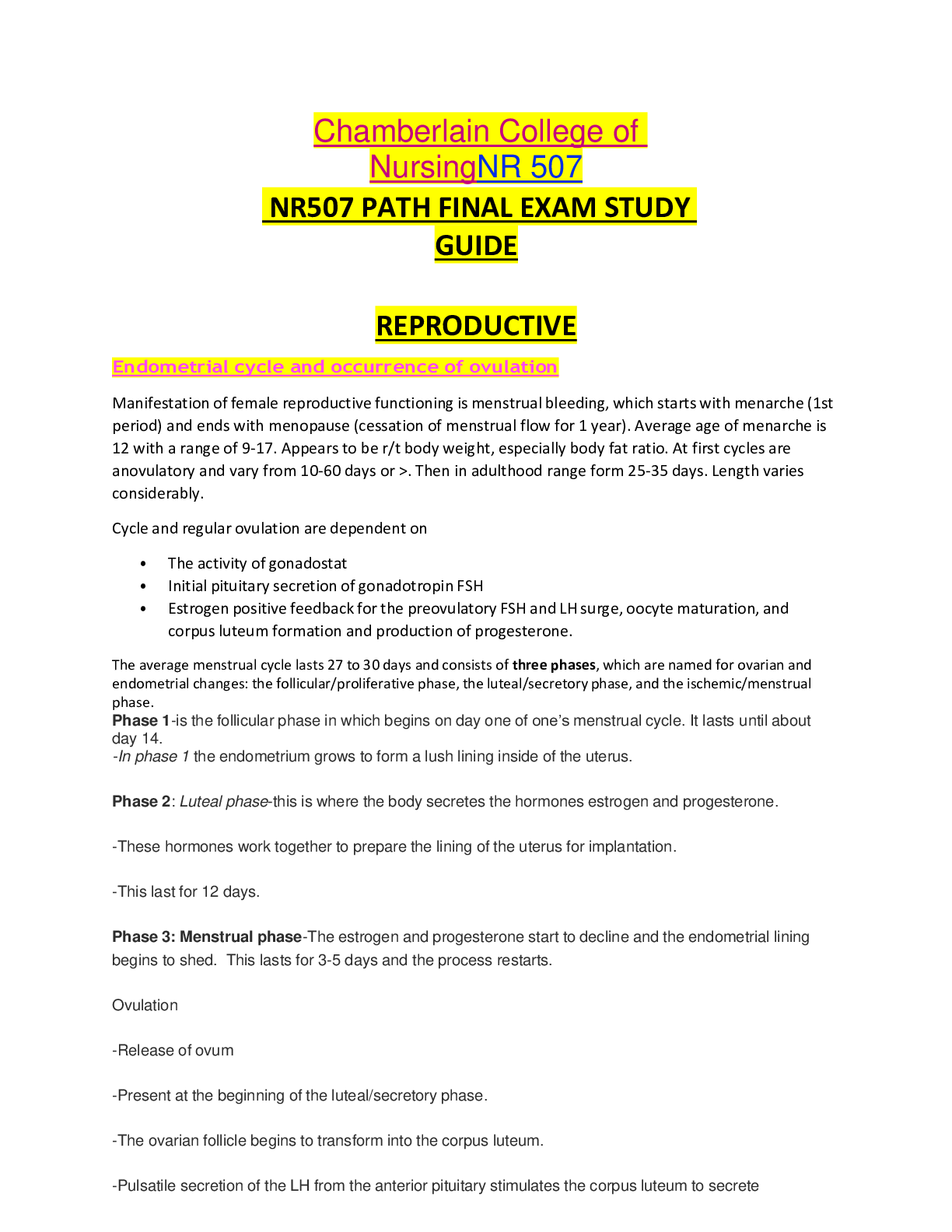Biological Psychology > STUDY GUIDE > University of Washington, TacomaBIO 201LBIO201L+Lab+6+Upload+Document completed The Skeletal System (All)
University of Washington, TacomaBIO 201LBIO201L+Lab+6+Upload+Document completed The Skeletal System
Document Content and Description Below
Lab 6 The Skeletal System BIO201L Student Name: Click here to enter text. Access Code (located on the lid of your lab kit): Click here to enter text. Pre-Lab Questions: ”1. List the functions of... the skeletal system.” The skeletal system provides the body with: support protection movement storage of nutrients Blood production through RBC in the bones.” 2. What material contributes the greatest to the compressive strength of bone? ” Calcium phosphate an calcium carbonate ” 3. Briefly describe the process of bone remodeling. ” The remodeling of bones begines with a recess stage when osteoclasts are recruited and activated for the beginning of the resorption of bones. Next comes the activation of osteoblasts to start the removal of osteoclasts which happens in the transition phase. Bone matrix then forms in the fimal phase which marks the start of bones starting to rebuild and establish growth of new bone cells. Experiment 1: Classification of Bones Table 6: Classification of Bones Bone Name Classification by Shape Classification by Location Scapula Flat Appendicular sphenoid irregular Axial Clavical Long bone Appendicular Frontal Flat bone Axia Radial Long bone Appendicular Femur Long bone Appendicular Hyoid Short bone Axial Ulna Long bone Appendicular Scaphoid Long bone AppendicularLab 6 The Skeletal System BIO201L Parietl Long bone Axial Post-Lab Questions ”1. Why is it important to classify bones? ” To accurately Identify them so as to simplfy the process of studying them for their location shape and purpose. During disease identification process of in the case of a process this information comes in handy , with clarity and in synopsis form.” 2. Aside from length, what are some other common characteristics of a long bone? Are long bones typically associated with the axial or appendicular skeleton? ” Long bones are generally on the the appendicular skeleton. They are long and wide and found on the upper and lower extremities. The long bone has the Diaphysis, epiphysis peristoneum and articular cartilage, yellow and red bone marrow where RBC are manufactured. They provide the body with strength and structure. ” 3. Compare flat bones and long bones. How are they different? How are they the same? ” Flat bones are made of a spongy network. They have two layers of compact bone. The main function of flat bones is to protect internal organs.The skull is an example of a flat bone it protects the brain. Long bones have :diaphysis, epiphysis, periosteum, endosteum, articular cartilage, epiphyseal plate, spongy bone, compact bone, medullary cavity, red marrow, and yellow marrow. This gives them the framwork they need to provide support the weight of the body and and facilitate movement. Experiment 2: Digital Slide Image Examination—Bone Post-Lab Questions ”1. Label the arrows in the following digital slide images: ” ”Cortical Bone: ” [Show More]
Last updated: 1 year ago
Preview 1 out of 18 pages
Instant download

Buy this document to get the full access instantly
Instant Download Access after purchase
Add to cartInstant download
Reviews( 0 )
Document information
Connected school, study & course
About the document
Uploaded On
Jun 23, 2021
Number of pages
18
Written in
Additional information
This document has been written for:
Uploaded
Jun 23, 2021
Downloads
0
Views
62


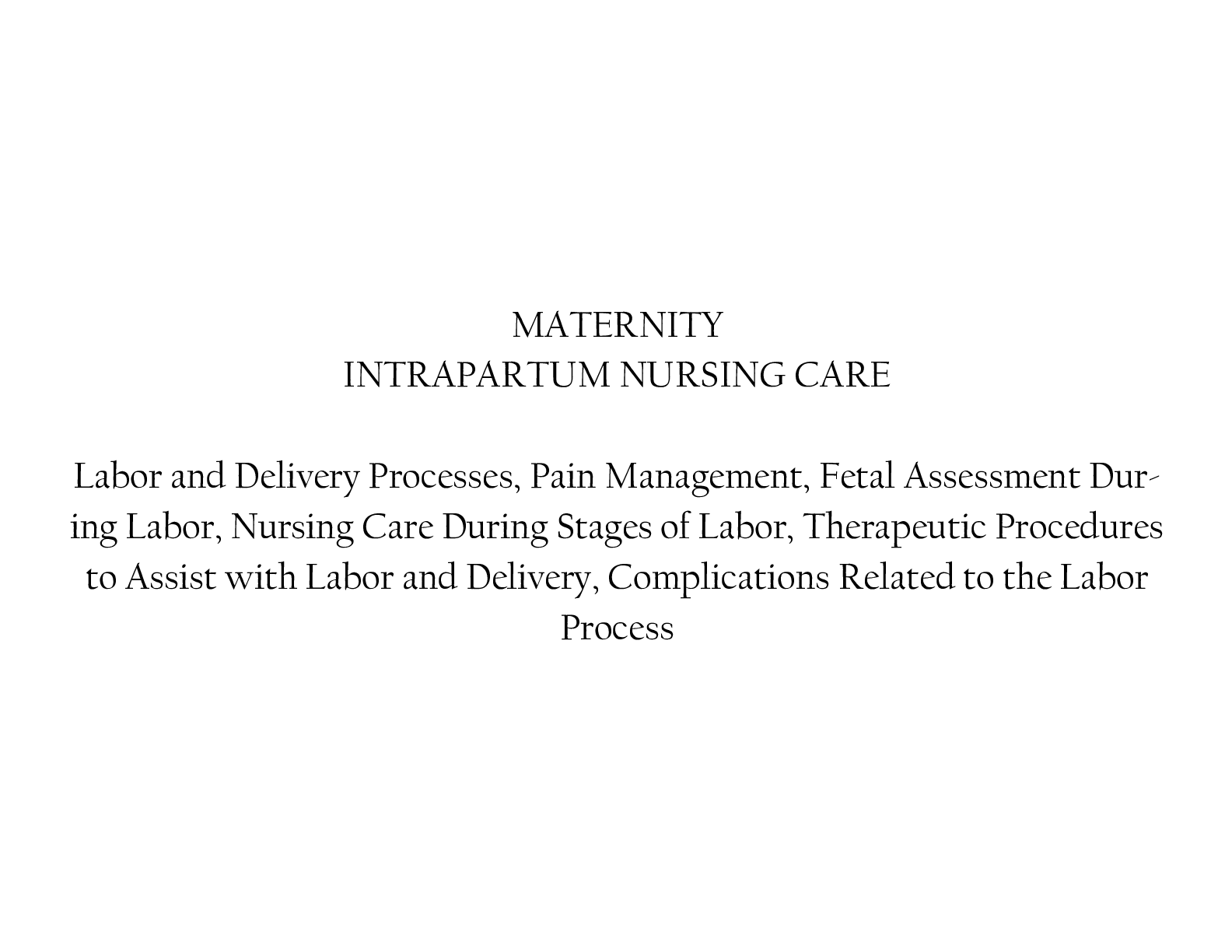

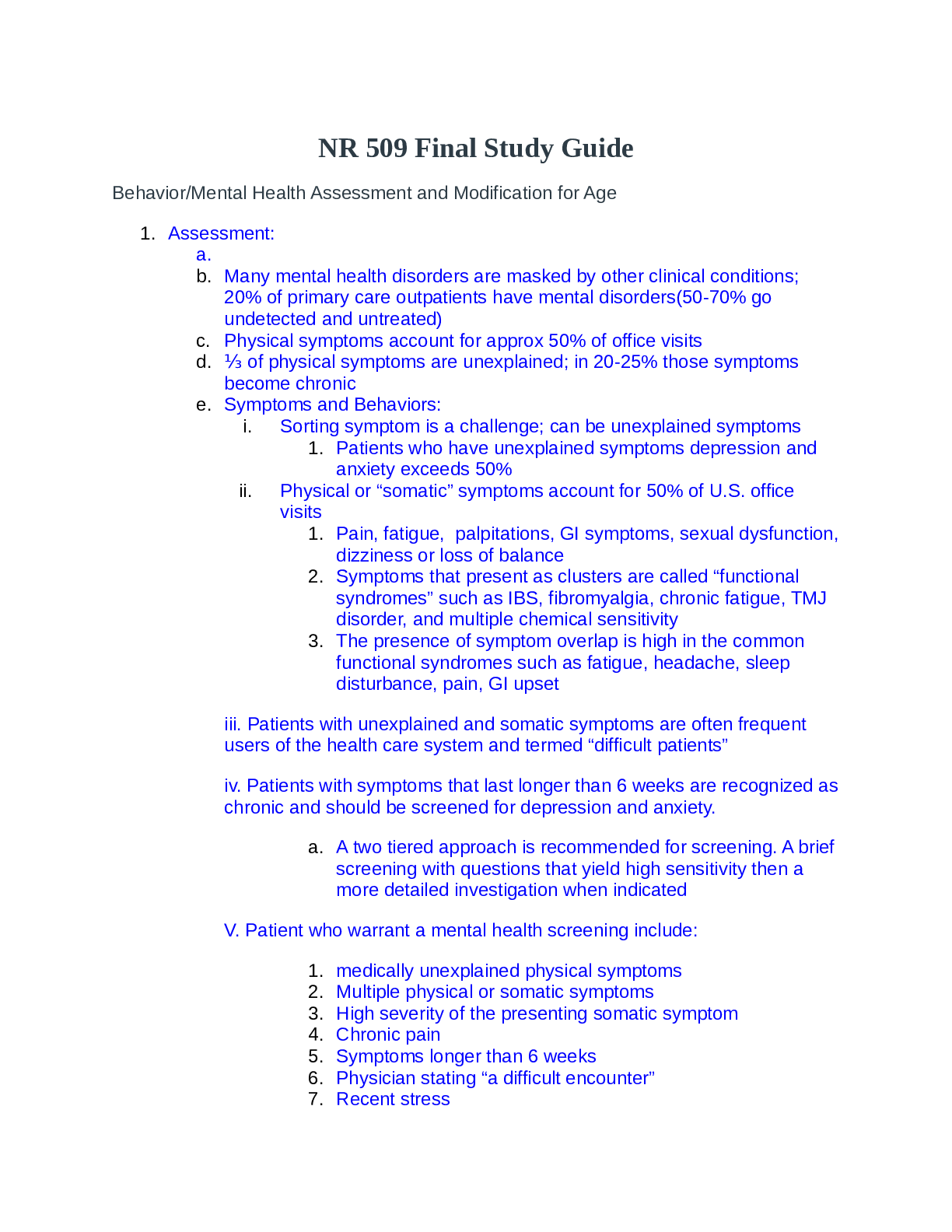
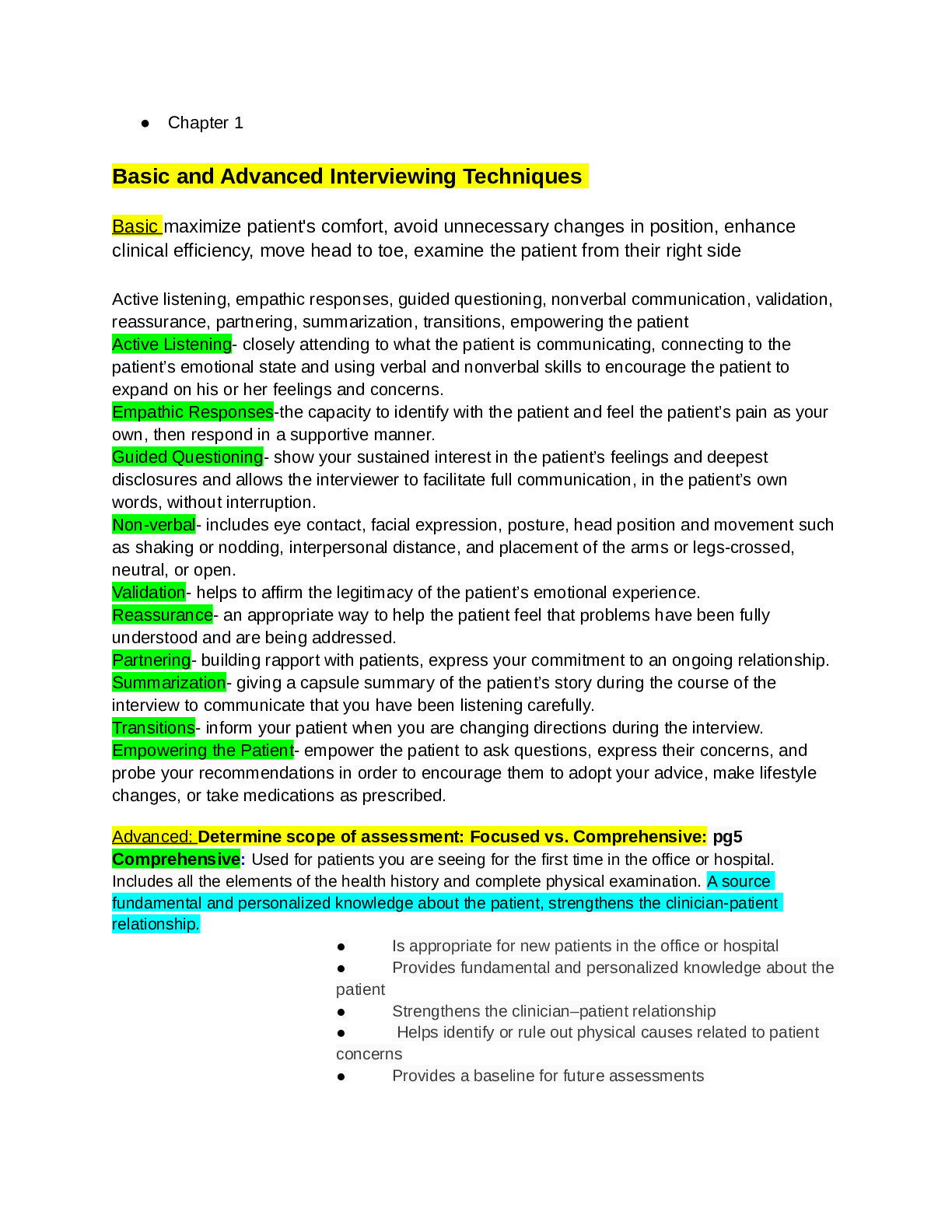
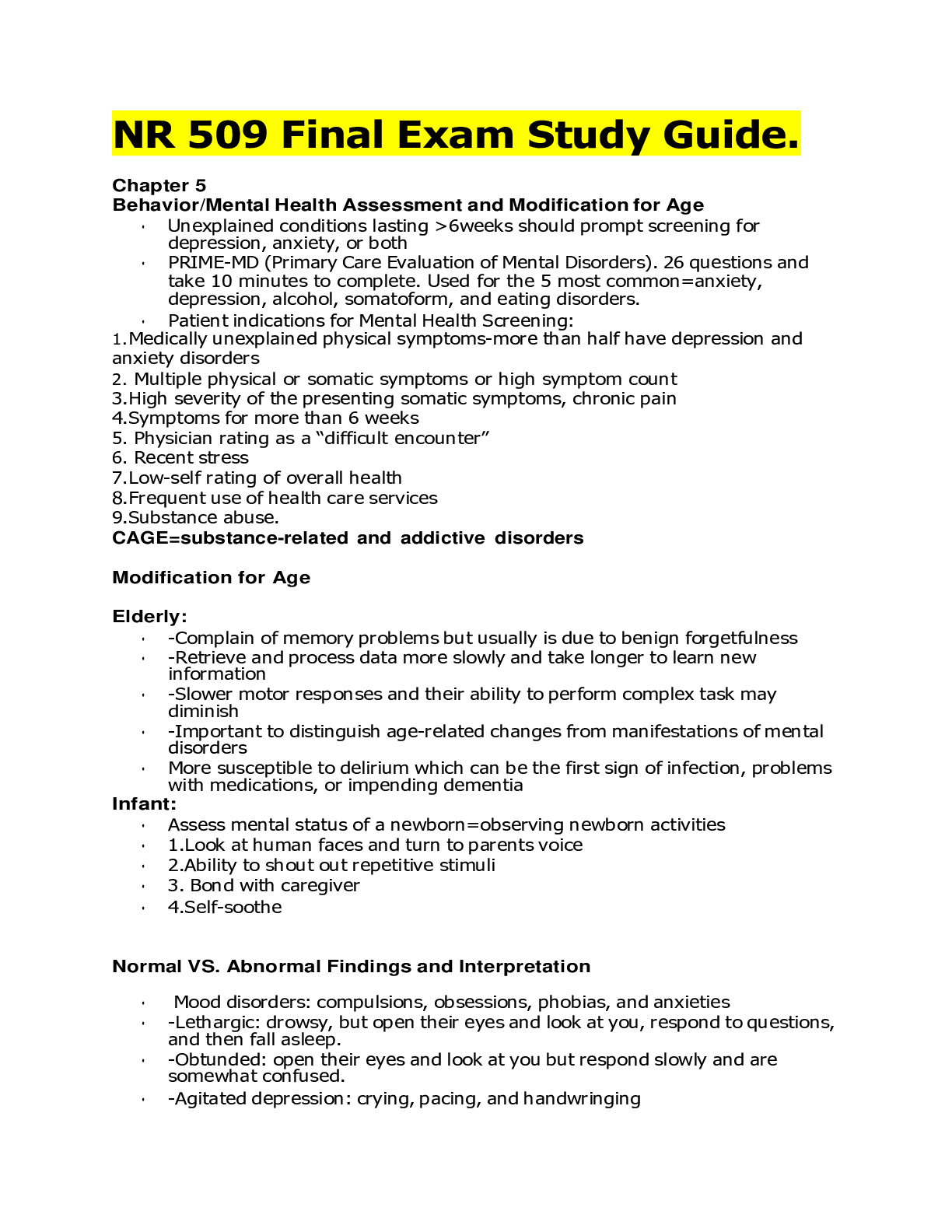
.png)




